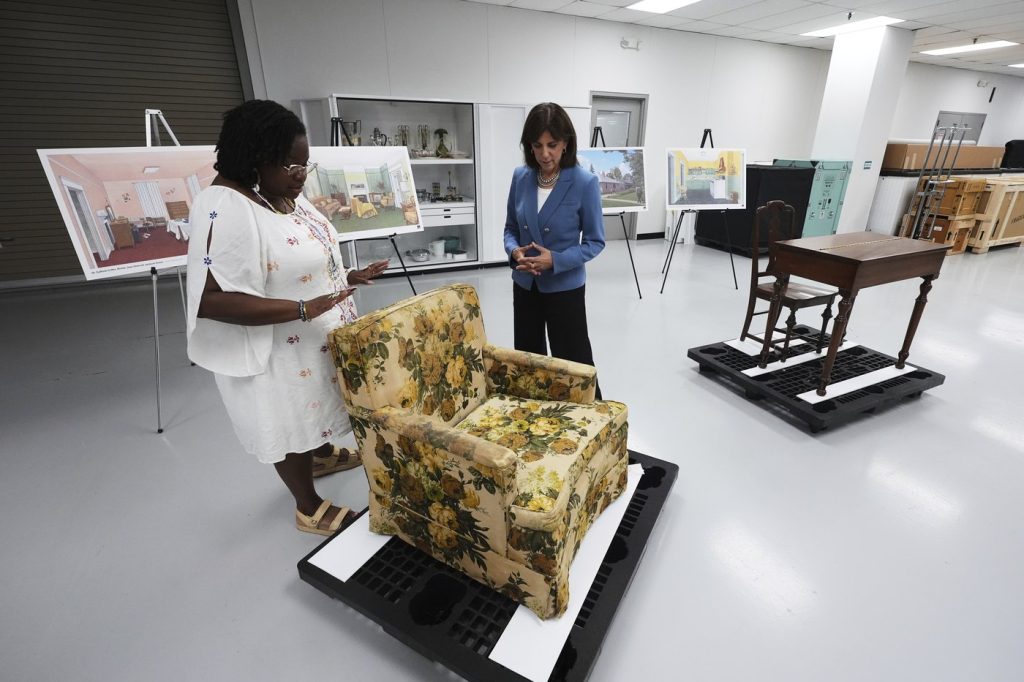DEARBORN, Mich. (AP) — Across the United States, various museums are showcasing artifacts that embody the significant milestones of the Civil Rights era. At the Henry Ford Museum in Dearborn, near Detroit, visitors have the opportunity to view the bus that Rosa Parks famously occupied when she refused to relinquish her seat to a white man in 1955. Additionally, the museum exhibits a desk used by the Rev. Martin Luther King Jr. for organizing voting rights marches. These artifacts serve not only as educational tools but also as crucial reminders of a pivotal time in American history.
Amber Mitchell, curator of Black history at the Henry Ford, highlighted the role of these exhibits in educating the public. She stated, “What we do here is help explain our story, as a community, as a culture, as a society to those who may not have lived through it, who may not remember it, or who may have a different memory than what we collectively understand.” This sentiment underscores the importance of historical preservation in fostering awareness and understanding among current and future generations.
However, access to similar artifacts at federal sites may face restrictions. Under policies enacted by the Trump administration, there are attempts to restrict what the former president termed “divisive” ideologies that confront the pervasive impact of racism in American history and culture. This has raised concerns about the availability of important educational resources related to the Civil Rights era.
The artifacts on display across various institutions include several poignant items that reflect the struggles and triumphs of the Civil Rights Movement:
- The Clark Doll, a dark-skinned plastic toy doll, was utilized by psychologists Kenneth and Mamie Clark during the 1940s for their research on the effects of segregation on Black children. This significant piece is permanently displayed at the Brown v. Board of Education National Historic Site in Topeka, Kansas.
- Shards of stained glass from the windows of the 16th Street Baptist Church in Birmingham, Alabama, are exhibited at The National Museum of African American History and Culture, part of the Smithsonian Institution in Washington, D.C. These shards are remnants of the tragic bombing by white supremacists in 1963 that resulted in the deaths of four Black girls attending Sunday school.
- Parts of a car belonging to NAACP activist Vernon Dahmer are on long-term loan to The Mississippi Civil Rights Museum in Jackson, Mississippi. In 1966, Dahmer’s home was attacked by the Ku Klux Klan, and he bravely rescued his family using the car. Unfortunately, he succumbed to smoke inhalation the following day.
- Fountain pens that President Lyndon B. Johnson used to sign landmark legislation, specifically the 1964 Civil Rights Act and the 1965 Voting Rights Act, are also on display at The National Museum of African American History and Culture.
- Additionally, Executive Orders 9980 and 9981, which mandated the desegregation of the U.S. military and federal government, are stored at the National Archives. Copies of these orders are showcased at the Harry S. Truman Presidential Library in Independence, Missouri. President Truman issued these orders in 1948 following the brutal beating of Army Sgt. Isaac Woodard, who was left blind after an encounter with a white police chief.
These artifacts not only offer a glimpse into the struggles and advancements of the Civil Rights Movement but also serve as vital resources for education and reflection on the complexities of American history related to race and justice.










